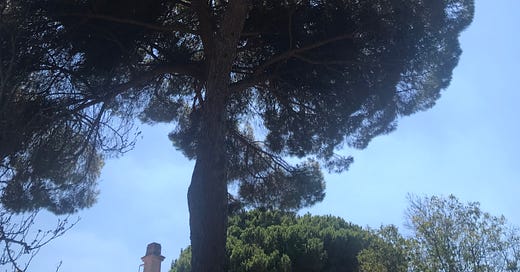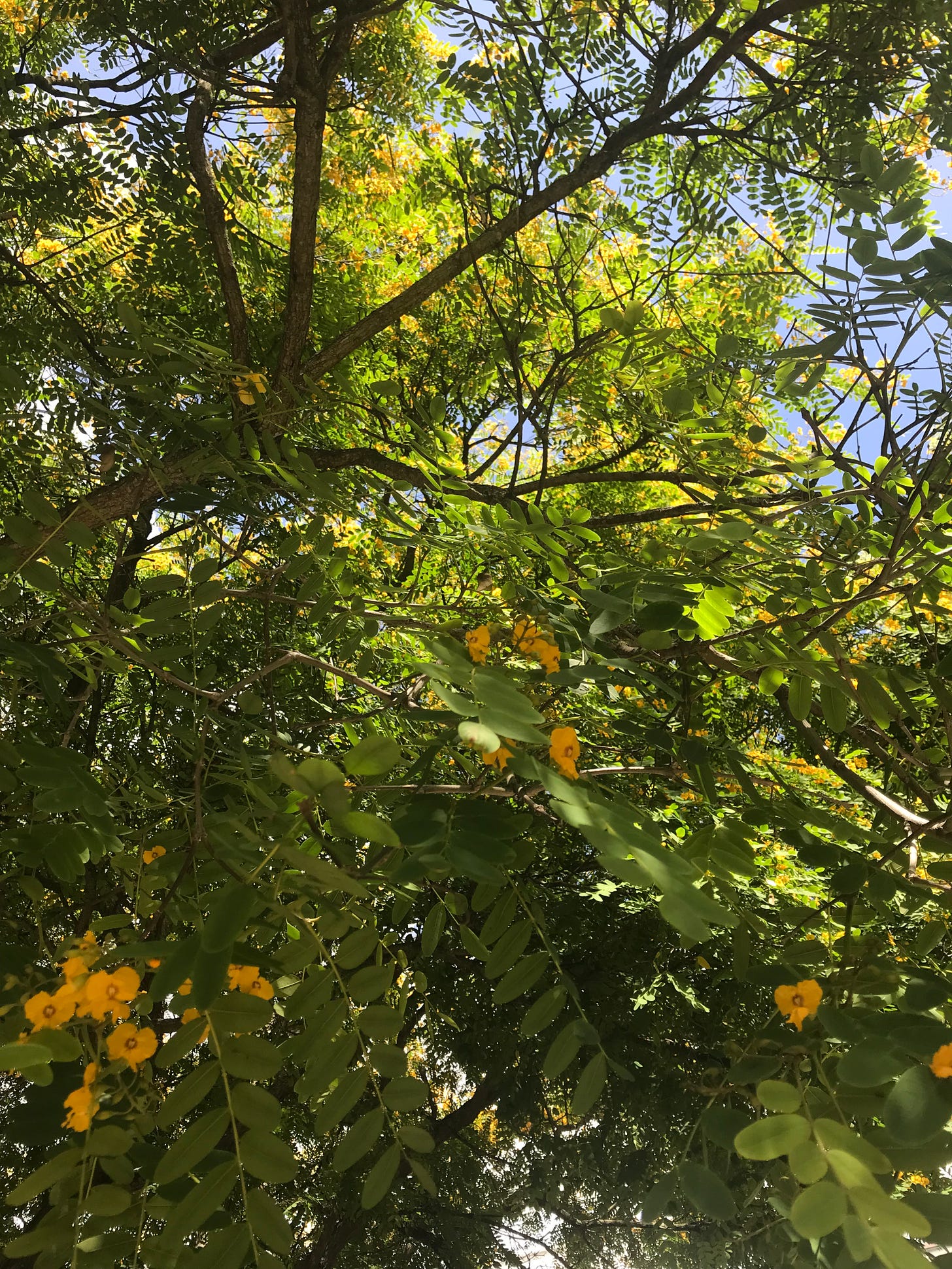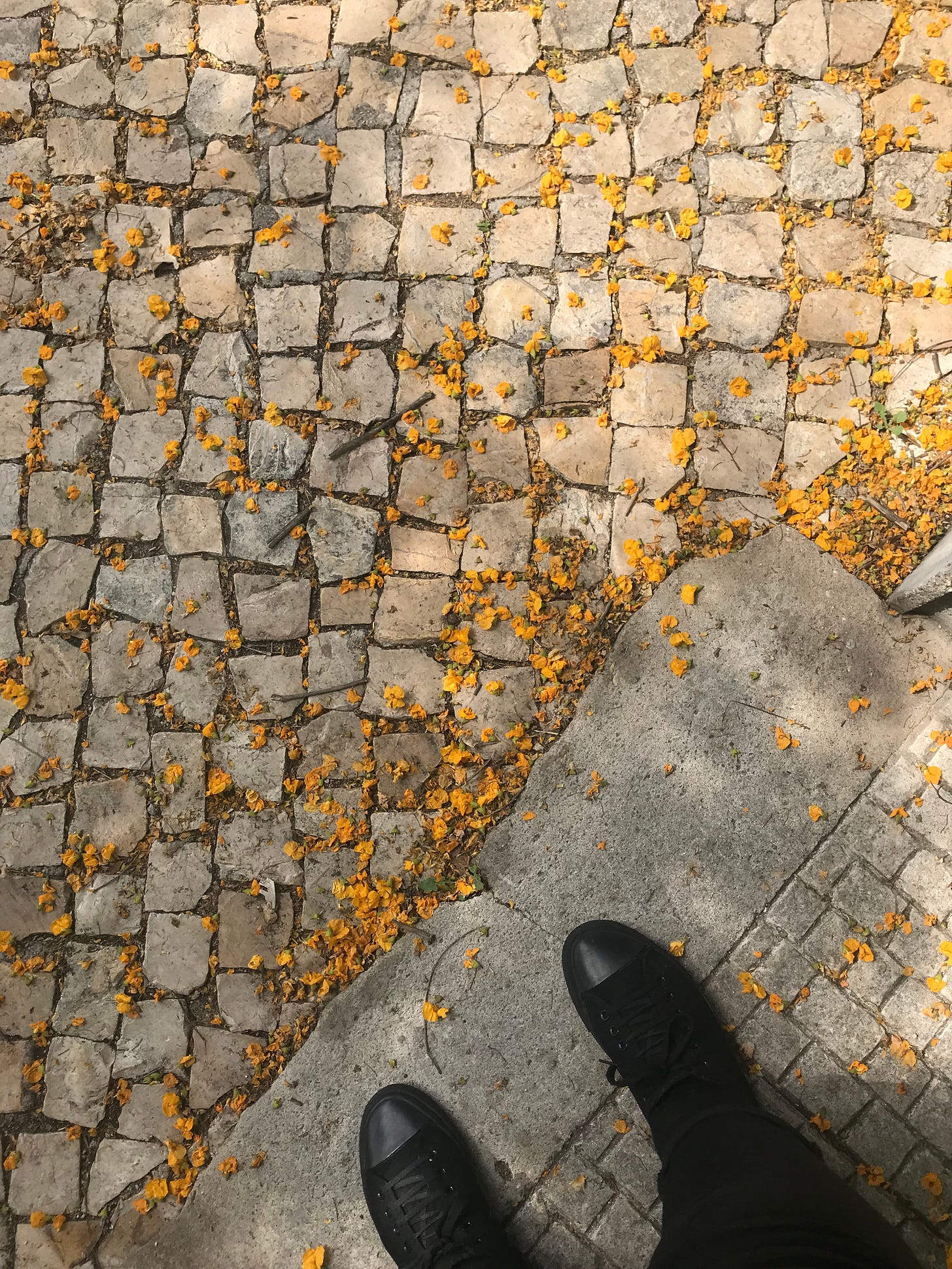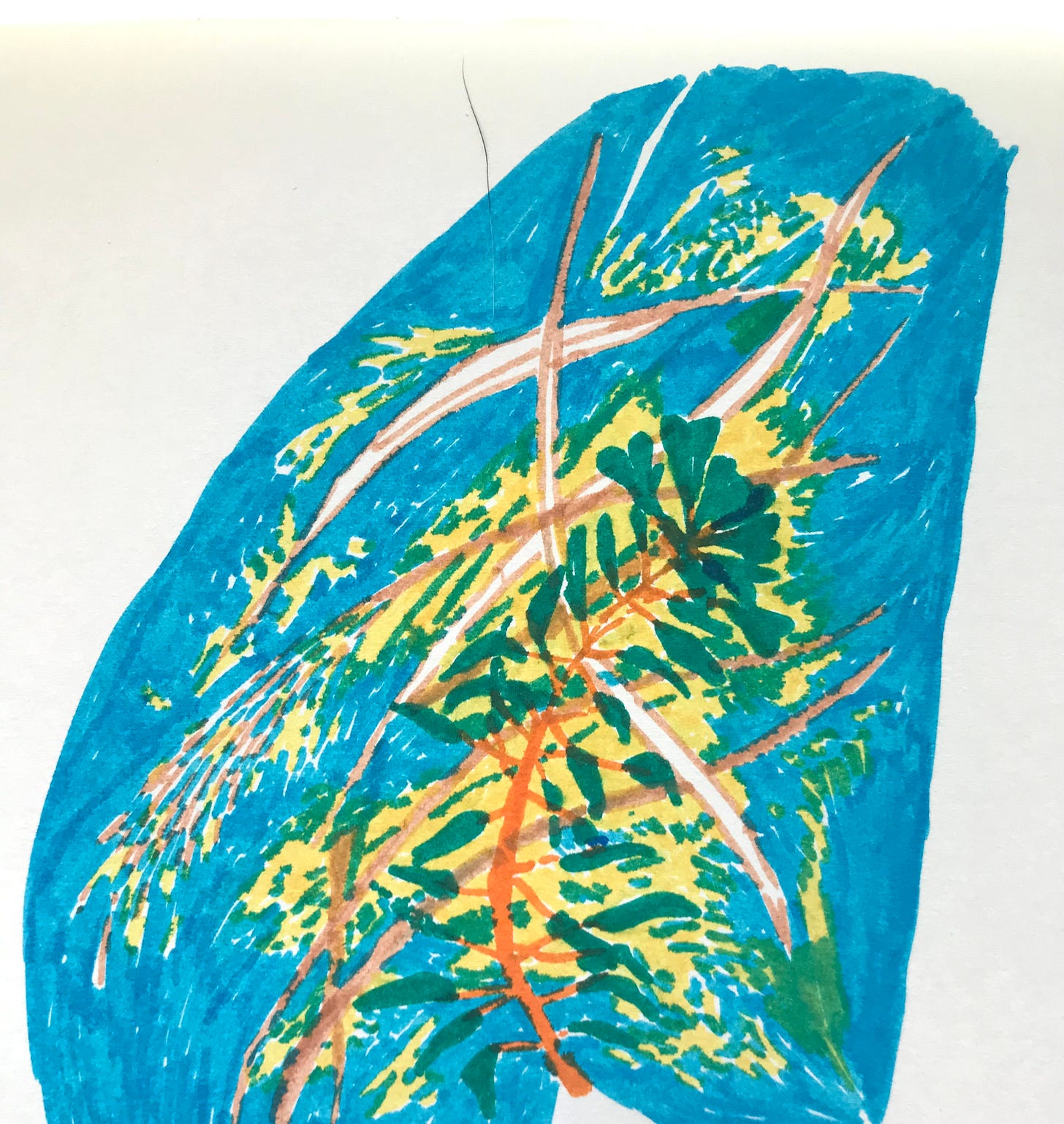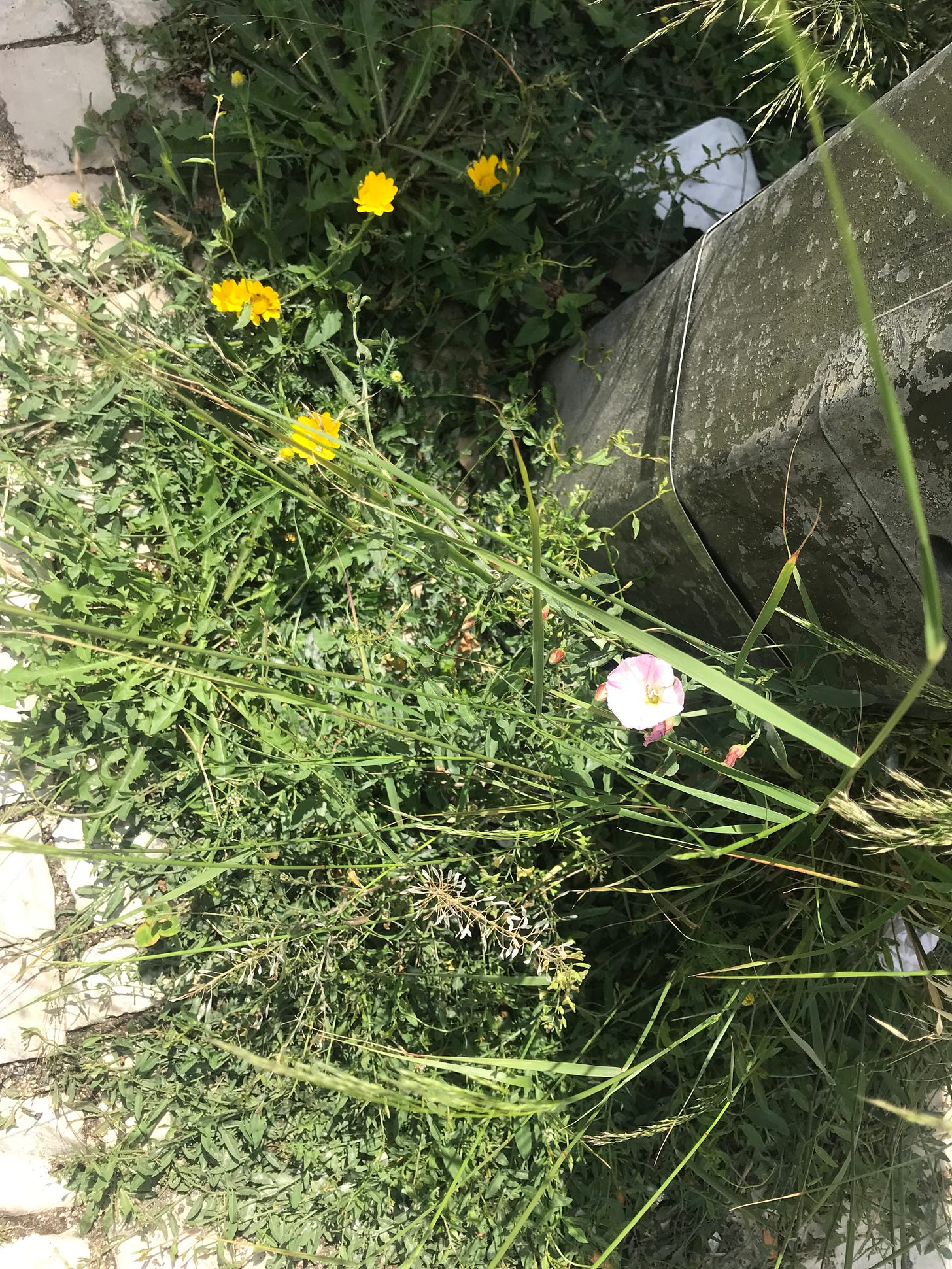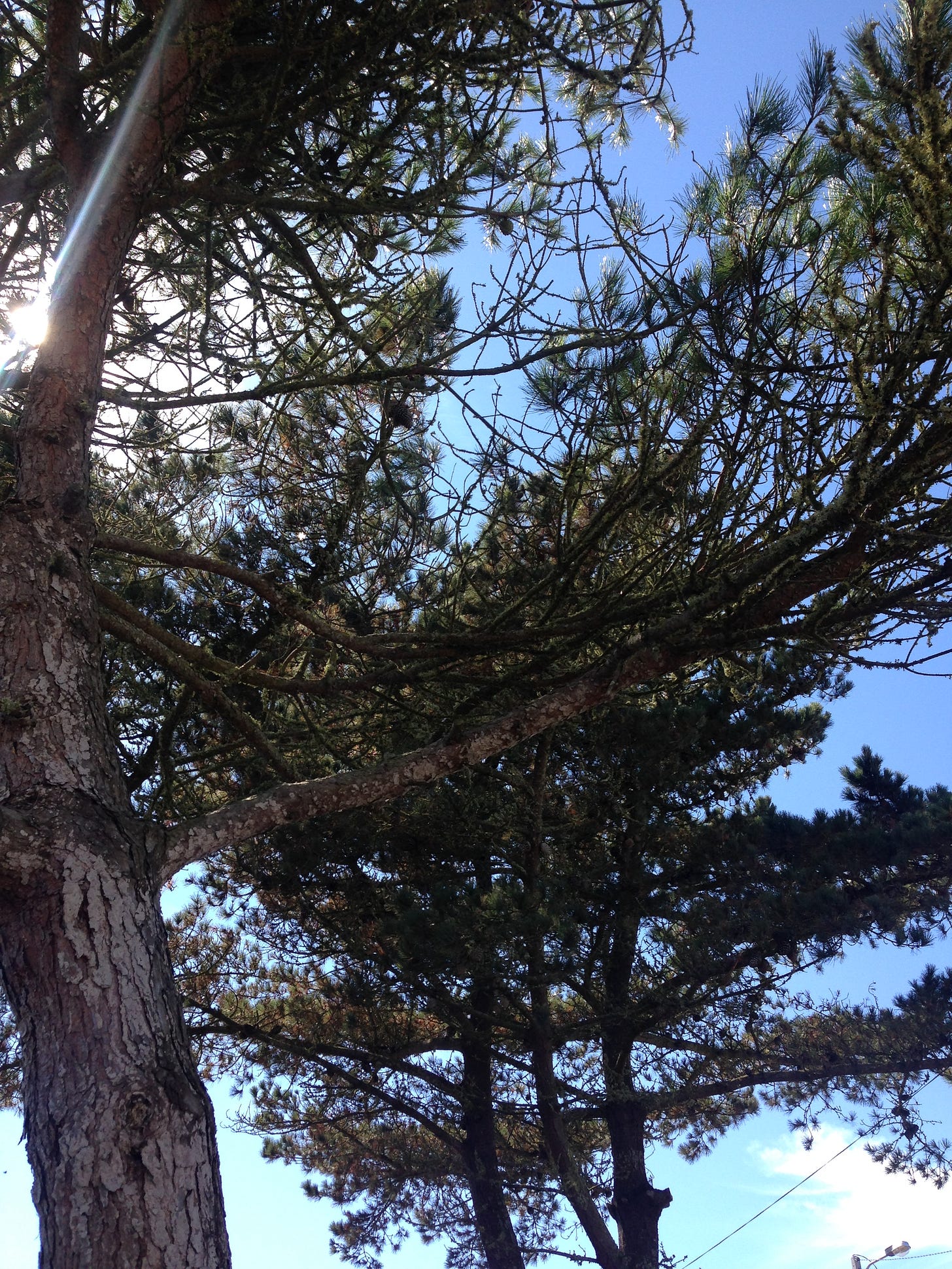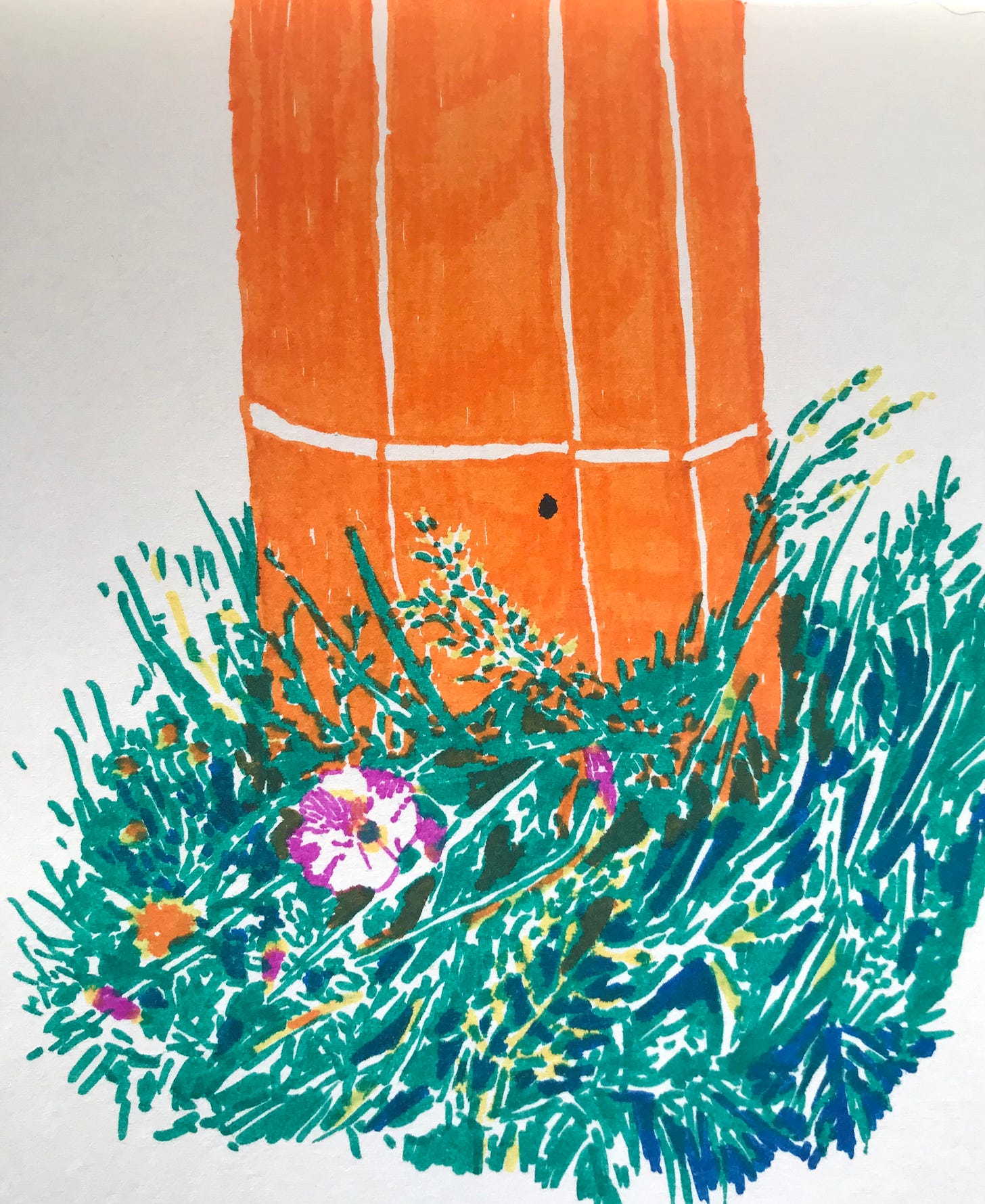(scrolldown for english)
O pinhal em Sintra ao lado da casa dos meus tios salvou-me a vida. Não é uma metáfora, junto com os meus avós aquele lugar deu-me amor, paz e a sensação de possibilidade. Podia passear por lá sozinha, caminhava por entre os pinheiros, imensos guardiões que me faziam sentir em casa. Gostava de sentir a caruma castanha e seca a estalar debaixo dos meus pés, a terra húmida e o musgo macio debaixo dos meus joelhos quando apanhava as pinhas caídas. Observava-as atenta à procura de pinhões, encontrava-os sempre e com uma pedra partia-lhes a casca para comer o fruto, uma pequena iguaria que fazia valer a pena o trabalho e as camisolas sujas do pó preto que cobria as cascas. Ouvia os pássaros e, curiosa, tocava na resina que escorria pelos troncos, os dedos ficavam pegajosos, mas gostava do cheiro e da transparência. Ficava quieta em silêncio a ouvir o pinhal, o rumorejar dos ramos, sossegada debaixo dos seus braços protectores observava as formigas, sempre atarefadas. Via o sol aparecer por entre as agulhas verdes das ramagens, pequenas magias, pontos de luz que apareciam aqui e acolá e que irrompiam em túneis de claridade através da sombra do pinhal. Tocavam o chão e criavam modestas clareiras iluminadas onde construía casinhas para as fadas e os anões, com ramos secos, caruma e pedras atapetadas de musgo verde.
Ainda hoje, não gosto de estar muito tempo longe dos pinheiros e tenho saudades de caminhar por pinhais adentro, coisa que, por vezes, só consigo fazer uma vez por ano. É sempre a primeira imagem que a minha mente forma quando preciso de lembrar-me que estou bem, em segurança – a minha mão pousada no tronco, a caruma, o cheiro a musgo e a resina, o som do vento nos ramos. Se o sinto, estou bem!
Vivo na cidade e sei exactamente onde há pinheiros em todos os sítios por onde quotidianamente passo – no vale, lá em cima num dos cabeços, em frente na encosta oposta quase ao lado da Piscina Municipal, vários no caminho para o Centro de Saúde, dois deles antigos e muito bonitos, no caminho do autocarro, de um lado ao pé da Alameda da Cidade Universitária, do outro lado no jardim do Campo Grande, antes disso, dentro do Museu da Cidade espreitam alguns acompanhados pelos pavões que habitam os jardins. Eu, que me confundo e desoriento tantas vezes e com tantas coisas, acho que conseguia perfeitamente desenhar um mapa da cidade coordenado por pinheiros. Fazem parte de mim e ao lado deles não estou perdida.
“Except on specific occasions, the vegetality of the world seems to be relegated precisely to the distant and imaginary background of our perception. It’s perception that - to use the elegant words of the philosopher Michael Marder - is the “key passageway for the body’s openness to the world and the world’s reception to the body.” In this openness, as time disappears, our relationship with space is all that matters. No longer separate from the exteriority of your milieu, the world around us ceases to be the world in the agreed sense of the world. Effervescing with evanescent and yet endless extemporizations, the world births itself visible in a remarkable fluidity of both composing and decomposing, becoming and undoing. It is in this liminal space of pure possibility, where the being-made meets the coming-undone, where light encounters darkness, that we, too, are conceived. It is here that we wait, not knowing, to encounter the other, to become the other, and - exactly as the planta maestra Socoba had susurrated- it is here that we, humans, become them, plants. (…)”
Monica Gagliano, Thus Spoke the Plant
As plantas não andam, mas florescem e dessa forma caminham. Movem-se e remexem a terra debaixo do alcatrão das ruas, expandem-se através das construções que fazemos, encontram caminho por entre as brechas das pedras de calcário dos passeios. Estão em todo o lado, estão ao nosso lado. A sua presença acompanha o meu caminhar, estou atenta, vejo, converso e é na sua companhia que me guio através do barulho das ruas e da agitação das pessoas que tanta confusão me faz. Os lódãos e as oliveiras que me acompanham ao autocarro e a quem agradeço a sombra que me protege do calor abrasador no Verão, as duas tipuanas grandiosas que durante os meses de Maio e Junho jorram fiapos de sol em forma de flores e forram o chão dum amarelo vivo que me recebe logo que saio de casa. As serralhas, o dente-de-leão e a tanchagem que crescem à volta da paragem do autocarro, as tílias com quem converso enquanto espero a minha vez à porta dos Correios. Confesso que tenho uma preferida mesmo no fundo da rua e que durante a pandemia, quando as filas eram longas e algumas vezes os dias difíceis, manteve durante todo o Inverno uma só folha verde, que nunca caiu e que todos os dias me renovava um pouco a esperança. Também os pássaros, os insectos e outros bichos se juntam a estas conversas. Há tantos pássaros em Lisboa - melros, pardais, andorinhas nos meses quentes, gaivotas, gaios, rabirruivos, papagaios, carriças, pintassilgos, alveólas brancas, basta escutar, ver. Tudo está vivo e move-se, nasce, cresce, morre. O momento em que nos apercebemos dos ritmos é o momento que antecede a sentirmos que fazemos parte deles, que são a nossa respiração, a de todos.
“Um mundo onde a acção e a contemplação deixam de se distinguir é também um mundo onde a matéria e a sensibilidade- ou, se se quiser, o olho e a luz - se amalgamam perfeitamente. Corpos e órgãos da sensibilidade não podem continuar separados. Deixaríamos de sentir somente com uma parte do nosso corpo, antes o faríamos com a totalidade do ser. Seríamos apenas um imenso órgão de sentidos que se confunde com o objecto apercebido. Um ouvido que é somente o som que escuta, um olho constantemente mergulhado na luz que lhe dá vida.”
Emanuele Coccia, A Vida das Plantas - uma Metafísica da Mistura
A natureza é um organismo vivo do qual fazemos parte, uma pequena parte.
A natureza não é um objecto, como a sede de poder capitalista e colonialista nos quer fazer crer; este utilitarismo, objectificação e supremacia dos seres humanos (deveria dizer, “alguns seres humanos”) isola-nos. Tornamo-nos incapazes e inúteis, a viver com medo fechados sobre nós próprios, sozinhos, sem comunidade, e por tudo isso, facilmente manipuláveis...
Sempre que nos esquecemos que fazemos parte desse organismo vivo, sempre que nos afastamos do mundo natural e da capacidade de nos maravilharmos, afastamo-nos de nós próprios, afastamo-nos da nossa humanidade.
A capacidade de ver é a capacidade de ser e ser é estar em comunhão.
“Monografia de uma comunidade verde em redor de um poste de iluminação”
Num dos meus percursos semanais pela cidade, reparo que à roda de um poste eléctrico de iluminação pública floresce uma pequena comunidade. Verde escuro, amarelo, verde seco, rosa, branco, verde claro, o sol brilhava por entre as plantas e a relva dos caminhos, Poa trivialis abanava com o vento em reflexos de amarelo acastanhado e verde. Observo com mais atenção e o meu olhar fixa-se na bolsa-de-pastor, Capsella bursa-pastoris, é uma planta muito bonita, e nesse momento deixo de ouvir o intenso ruído urbano à minha volta. Fico a contemplá-la, a sua leveza e a sua delicadeza impressionam-me, comovem-me.
Pelos caules de duas das relvas dos caminhos reparo que se entrelaça a corriola-campestre, Convolvulos arvenses, uma planta trepadeira, com os botões rosas das suas flores a despontarem, aqui e ali, perto das folhas. Sigo o seu caule ondulante e, mais à frente, vejo que uma das flores já desabrochou em pleno, numa gradação rosa, branca até ao ponto amarelo já perto do cálice. Mesmo ao lado as cevadas das carreiras, Hordeum murinum, ainda maduras em verde vivo recebem o sol e rodeiam o pão-posto, Anacyclus radiatus e os dente-de-leão, Taraxacum officinalis. Mais à frente as pedras da calçada soltaram-se e um rasgo de terra respira até ao poste. As plantas mais libertas no seu caminho ascendente florescem e pintam uma mancha verde e amarela entre o poste e a estrada. Aqui e ali a tanchagem, Plantago major, espraia circularmente as suas folhas.
Interrompo a nossa conversa por um momento e levanto o olhar, estou no meio de um espaço urbano imenso, confuso e ruidoso, uma praça que atravesso duas ou três vezes por semana – paragens de autocarros para a cidade e arredores, cafés, uma farmácia, uma estação de metro, um estádio de futebol, um supermercado – um espaço feito de edifícios utilitários e residuais sem ligação entre si a não ser a passagem contínua de pessoas de um sítio para o outro, o barulho constante do trânsito.
Desvio o olhar, assoberbada pela confusão e regresso ao convívio calmo com a pequena comunidade vegetal. Respiro fundo, interrompo o ruído e aliviada sinto o sol e a brisa que nos travessa naquele momento, estou em comunhão naquele encontro.
Saudações outonais do 5A com vista para o vale.
Fiquem bem, até para a semana!
The pine grove in Sintra next to my aunt and uncle's house saved my life. It's not a metaphor; along with my grandparents, that place gave me love, peace, and a sense of possibility. I could walk there alone, wander among the countless pine trees, like towering guardians, which made me feel at home. I loved feeling the brown, dry pine needles crackling beneath my feet, the damp earth, and the soft moss under my knees when I picked up fallen pinecones. I examined them closely, searching for pine nuts, always finding them, and I'd crack open the shells with a stone to eat the fruit, a small delicacy that made the effort and the sweaters covered in the black dust of the shells worthwhile. I listened to the birds and curiously touched the resin oozing from the trunks, my fingers becoming sticky, but I enjoyed the smell and transparency. I would sit quietly, listening to the pine grove, the rustling of branches, peaceful under their protective arms, observing the ever-busy ants. I watched the sun peeking through the green needles of the branches, small magic, points of light appearing here and there, creating tunnels of brightness through the pine grove's shadows. They touched the ground and formed modest illuminated clearings where I built houses for fairies and dwarves, using dry branches, pine needles, and rocks covered in green moss.
Even today, I don't like to be far from pine trees for too long, and I miss walking deep into pine forests, something I can only do once a year sometimes. It's always the first image my mind conjures when I need to remind myself that I am well, safe – my hand resting on the tree trunk, the pine needles, the smell of moss and resin, the sound of the wind in the branches. If I feel it, I am okay!
I live in the city, and I know exactly where there are pine trees everywhere I go in my daily routine – in the valley, up on one of the hills, across from the Municipal Pool, several along the way to the Health Center, two of them old and very beautiful, on the bus route, on one side near the University City Avenue, on the other side in the Campo Grande garden, before that, inside the City Museum, some peek out, accompanied by the peacocks that inhabit the gardens. I, who get confused and disoriented so often and with so many things, think I could easily draw a map of the city marked by pine trees. They are a part of me, and next to them, I am not lost.
"Except on specific occasions, the vegetality of the world seems to be relegated precisely to the distant and imaginary background of our perception. It's perception that - to use the elegant words of the philosopher Michael Marder - is the “key passageway for the body’s openness to the world and the world’s reception to the body.” In this openness, as time disappears, our relationship with space is all that matters. No longer separate from the exteriority of your milieu, the world around us ceases to be the world in the agreed sense of the world. Effervescing with evanescent and yet endless extemporizations, the world births itself visible in a remarkable fluidity of both composing and decomposing, becoming and undoing. It is in this liminal space of pure possibility, where the being-made meets the coming-undone, where light encounters darkness, that we, too, are conceived. It is here that we wait, not knowing, to encounter the other, to become the other, and - exactly as the planta maestra Socoba had susurrated- it is here that we, humans, become them, plants. (…)”
Monica Gagliano, Thus Spoke the Plant
Plants don't walk, but they bloom and, in doing so, they move. They shift and disrupt the earth beneath the pavement of the streets, expand through the structures we build, find their way through the gaps in the limestone stones of the sidewalks. They are everywhere, they are by our side. Their presence accompanies my walks, I'm attentive, I see, I converse, and it's in their company that I navigate through the noise of the streets and the hustle and bustle of people, which often confuses me. The grass and olive trees that accompany me to the bus stop, to whom I'm grateful for the shade that protects me from the scorching heat in the summer, the two magnificent Tipuana trees that, during May and June, shower golden wisps of sun-shaped flowers and carpet the ground in vivid yellow as soon as I leave home. The plantains, dandelions, and ribwort plantains that grow around the bus stop, the linden trees I chat with while waiting my turn at the Post Office. I confess I have a favorite way down the street, and during the pandemic, when the lines were long and some days were tough, it maintained a single green leaf throughout the winter, never falling, renewing my hope a little every day. Birds, insects, and other creatures also join these conversations. There are so many birds in Lisbon - blackbirds, sparrows, swallows in the warmer months, seagulls, jays, redstarts, parakeets, wrens, goldfinches, white wagtails, you just need to listen and look. Everything is alive and moves, is born, grows, dies. The moment we become aware of these rhythms is the moment before we realize that we are part of them, that they are our breath, everyone's breath.
"A world where action and contemplation cease to distinguish themselves is also a world where matter and sensitivity - or, if you will, the eye and the light - merge perfectly. Bodies and organs of sensitivity can no longer remain separate. We would no longer feel with only one part of our body; instead, we would feel with our entire being. We would be just an immense sensory organ that merges with the perceived object. An ear that is only the sound it hears, an eye constantly immersed in the light that gives it life."
Emanuele Coccia, The Life of Plants - A Metaphysics of Mixture
Nature is a living organism of which we are a small part. Nature is not an object, as the capitalist and colonialist thirst for power wants us to believe; this utilitarianism, objectification, and human (I should say, "some humans") supremacy isolate us. We become helpless and useless, living in fear, closed in on ourselves, alone, without community, and thus easily manipulated... Whenever we forget that we are part of this living organism, whenever we distance ourselves from the natural world and the ability to marvel, we distance ourselves from ourselves, from our humanity. The ability to see is the ability to be, and to be is to be in communion.
"Monograph of a Green Community around a Streetlight"
During one of my weekly journeys through the city, I notice that around a streetlight, a small community thrives. Dark green, yellow, dry green, pink, white, light green, the sun shines through the plants and the grass on the pathways. I observe more closely, and my gaze fixes on shepherd's purse, Capsella bursa-pastoris; it's a very beautiful plant, and at that moment, I no longer hear the intense urban noise around me. I stare at it, its lightness and delicacy impress me, move me. Along the stems of two of the grassy paths, I notice bindweed, Convolvulus arvensis, a climbing plant, with pink buds of its flowers emerging here and there near the leaves. I follow its undulating stem, and further ahead, I see that one of the flowers has fully blossomed, in shades of pink, white, and almost yellow near the calyx. Right next to it, the roadside barley, Hordeum murinum, still ripens in bright green, receiving the sun, and surrounds the radiant daisy, Anacyclus radiatus, and dandelions, Taraxacum officinalis. Further on, the pavement stones have loosened, and a strip of earth breathes up to the lamppost. The more liberated plants in their upward path bloom and paint a green and yellow patch between the lamppost and the road. Here and there, plantain, Plantago major, spreads its leaves in a circular pattern.
I pause our conversation for a moment and look up. I am in the middle of a vast, noisy, and bustling urban space, a square I cross two or three times a week – bus stops to the city and suburbs, cafes, a pharmacy, a metro station, a football stadium, a supermarket – a space made up of utilitarian and residual buildings with no connection between them other than the continuous passage of people from one place to another, the constant noise of traffic.
I shift my gaze, overwhelmed by the confusion, and return to the calm interaction with the small plant community. I take a deep breath, interrupt the noise, and feel relieved by the sun and the breeze that pass through us in that moment; I am in communion in that encounter.
Warm autumn greetings from 5A overlooking the valley...
Take care, see you next week!

